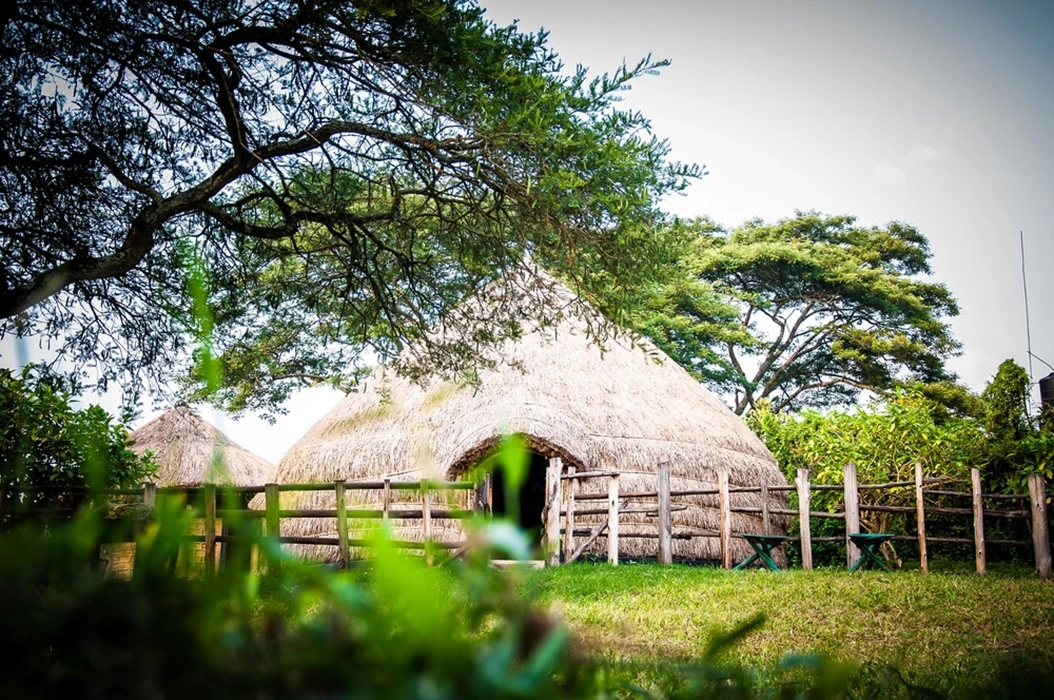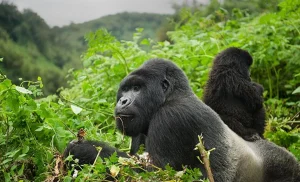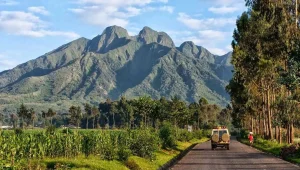Bigo Bya Mugenyi Historical Site
Uganda’s Bigo bya Mugenyi is a historically significant location in the southwest of the country, on the south bank of the Katonga River. It is roughly 60 kilometers from Sembabule town and occupies an area of 10 square kilometers. It is very significant because it provides information about the pre-colonial past and the ancient civilization that once flourished in the area. Bigo Bya Mugenyi Historical Site.
The Bachwezi and Chwezi people are thought to have founded Bigo Bya Mugenyi initially. The location has been there since the 13th century. Unfortunately, the Ndahura and Wamala dual role dynasty of the Bachwezi people did not endure.
Bigo Bya Mugenyi’s massive earthworks. Which include a number of concentric rings, embankments, ditches, and other structures, are among its most remarkable features. These were primarily utilized for the people’s defense and protection, though they were also occasionally used for hunting.
Bigo Bya Mugenyi is composed of wild flowers, savannah grasses, shrubs, and crickets. The location serves as both a research and cultural site. Before entering the Bigo Bya Mugenyi, visitors are typically required to wash themselves; this is thought to be done to prevent the local gods from becoming enraged and hurting them.
What has made Bigo Bya Mugenyi well-known?
Exploring Uganda’s Hidden Bigo Bya Mugenyi Historical Site. The 10-square-kilometer Bigo Bya Mugenyi area of ancient earthworks in southwest Uganda is well-known for its archeological value and connection to the legendary Bacwezi dynasty. The “Fort of a Stranger” is another name for it. The fabled Bachwezi, a clan of northern demigods, are thought to have constructed the earthworks. Which date from the 13th to the 17th century.
Where is Bigo Bya Mugenyi located?
In the interlacustrine region of southwest Uganda. Bigo bya Mugenyi, usually simply referred to as Bigo (“city”), is a vast network of ditches and berms that make up ancient earthworks. Bigo, which is located on the Katonga River’s southern coast, is best described as having two components.
Why were ditches dug near Bigo Bya Mugenyi by the Bachwezi?
Digging ditches surrounding Bigo bya Mugenyi was done by the Bachwezi. Who are said to be demigods and the builders of the Kitara Empire, for a number of reasons, chief among them being defensive and maybe symbolic. The purpose of the ditches was to keep off possible invaders, especially the South Sudanese Luo. Elephants may have been kept away from fields by using the earthworks. And the central earthworks might have safeguarded the rulers while also acting as hubs for trade and demonstrations of organizational prowes
How does Bachwezi relate to Bigo Bya Mugenyi?
Bigo Bya Mugenyi is a cultural site and historical site in Uganda. The Chwezi, also known as the Bachwezi, are thought to have been the first people to settle in what is now known as the Bigo Bya Mugenyi, a prehistoric location in Mawogola County. They also inhabited western and central Uganda.
What can be discovered at Bigo Bya Mugenyi?
The 1960 excavations at Bigo yielded about 4,200 ceramic sherds from pots and jars, six fireplace kerbs, one clay bead, and iron artifacts that included a spear ferrule, a broken knife that was probably used for grain harvesting, a tanged arrowhead, and a piece of a bracelet.
What is Bigo Bya Mugenyi’s background in Uganda?
Oral legends connect the fabled Bacwezi, a brief two-reign dynasty, with the Bigo bya Mugyenyi earthworks. These were Wamala and Ndahura. Oral histories also link the Bacwezi to the introduction of long-horn cattle. Which eventually took over the Great Lakes region’s economy.
A visitor can proceed to the other cultural sites of Nakayima and Ndawula from Mugenyi’s fort. The distance between Mugenyi’s forts and these two historical locations is only 2 kilometers. People from various forts used to congregate at the Ndawula cultural site to receive blessings, according to Singel, a senior guide there. But according to legend, the gods at this location have vanished and are now held by those who congregate there for devotion. According to him, the location currently has 20–40 visitors who come primarily to pray to the Chwezi gods, with occasional tourists.
The Mugenyi site is more well-known than Ndawula and Nakayima. Despite the fact that all three of the Bigo Bya cultural sites are exciting. Many people flocked to these three locations to seek blessings and make requests for what they needed.




